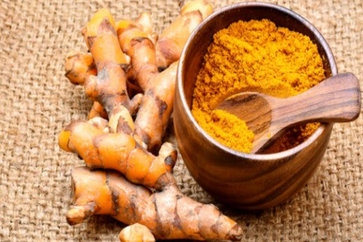How to Treat Scleroderma Symptoms Naturally?
Scleroderma, also known as systemic sclerosis, is a chronic autoimmune disease that affects the connective tissues in the body. The condition is characterized by the excessive production and accumulation of collagen, leading to thickening and hardening of the skin and other organs.
The exact cause of scleroderma is unknown, but researchers believe that a combination of genetic and environmental factors may contribute to its development. The immune system plays a crucial role in the disease, as it mistakenly attacks healthy tissues, triggering inflammation and the production of collagen.
There are two main types of scleroderma: localized and systemic. Localized scleroderma primarily affects the skin and usually has a milder course. It typically manifests as patches of thickened, hardened skin.
Systemic scleroderma, on the other hand, involves not only the skin but also internal organs such as the lungs, heart, kidneys, and gastrointestinal tract.
It can cause various symptoms depending on the affected organs, including Raynaud’s phenomenon (color changes in the fingers and toes in response to cold or stress), joint pain, fatigue, difficulty swallowing, and shortness of breath.
What is scleroderma?
- It is a group of chronic skin diseases that are closely associated with the hyperactive immune system.
- The connective tissues are the fibers that provide the support and framework for the body. Scleroderma is an autoimmune disease of connective tissues. In scleroderma, due to the formation of scar tissues (fibrosis) in the skin, connective tissues become hard and thick.
- As it is an autoimmune disease, the immune system starts attacking its own body resulting in scleroderma.
- Scleroderma is a progressive and long-term disease. It worsens over a period of time. This disease can cause changes in muscles, skin, and internal organs.
- As a result of the activation of the immune system in sufferers, the innermost layer of small blood vessels and the tissues get traumatized resulting in the formation of scar tissue and the accumulation of excess collagen.
What is the prevalence of scleroderma?
- Scleroderma’s occurrence entirely depends from person to person.
- Women are most commonly affected rather than males.
- It is most commonly seen in the 20-40 age.
What are the causes of scleroderma?
- The exact etiological factor of scleroderma is unknown.
- It is an autoimmune disease in which the immune system becomes hyperactive and stimulates cells in connective tissue resulting in the production of much more collagen resulting in the thickening and scarring of the tissues.
- In genetically predisposed individuals, some environmental factors such as organic solvents, viral infections, and radiation therapy may also lead to the development of scleroderma.
What is the classification of scleroderma?
Scleroderma is classified into 2 types i.e., localized scleroderma and systemic scleroderma
Localized scleroderma- it is the mild form
- It most commonly affects the skin but can also involve muscles, bones, and joints.
- Internal organs are not affected by this type of scleroderma.
- Symptoms involve morphea (hard oval-shaped patches on the skin), streaks or bands of thickened skin on the arms, face, and legs.
Systemic scleroderma– instead of mild, it is the most serious form of scleroderma which involves the skin, joints, muscles, blood vessels, kidneys, heart, lungs, and many other organs.
What are the symptoms of scleroderma?
Some of the common symptoms of scleroderma areas are listed below-
- Stiffness, puffiness, And tightness of fingers
- Swelling in the feet and hands, especially in the morning
- Pitting ulcers on the fingertips
- Red spots on hands and face
- Deposits of calcium in connective tissues
- Thickened and hardened skin of fingers
- Dryness of eyes or mouth
- Muscle weakness
- Pain or inflammation of joints
- Diarrhea
- Bloating
- Heartburn
- Problems of the esophagus (the tube which connects the throat to the stomach).
What are the signs of scleroderma?
- Thick and hard skin which appears smooth and shiny. It occurs most commonly in winter and toes and fingers turn red, blue, or white. This is also known as Raynaud’s phenomenon.
- Ulcers or sores on the tips of the fingers.
- Red spots appear on the chest and face.
- Dyspnea( breathlessness)
How to diagnose scleroderma?
As scleroderma can affect various sites and can take so many forms, it is difficult to diagnose scleroderma. Physical examination, blood tests, imaging studies such as CT scan of the lungs, and echocardiogram of the heart can be done to reach the diagnosis. A biopsy of the skin can be done to confirm the diagnosis of scleroderma.
What is the Ayurveda view of scleroderma?
As it occurs due to an imbalance in the 3 doshas leading to disruption of twak, raktadhatu, mamsadhatu and ambhu. This disease can be managed by maintaining the balance between the doshas.
There are various herbs to be used in the management of scleroderma as follows-
1. Gandhak
It is also known as purified sulfur. It is an effective, safe, and natural remedy to use in the scleroderma. It helps in retaining healthy skin. It helps to fight against various bacterial and skin infections. Its properties of absorption of moisture from the environment into the skin. It helps in bringing out the healthy skin from below and hence, helps in getting rid of the dead skin from the body.
2. Neem
It is a potent herb and helps in getting rid of several skin disorders. Neem acts as an anti-inflammatory, blood purifier, and best anti-allergic to eradicate the skin diseases like scleroderma. Its anti-inflammatory properties help in the reduction of pain and inflammation which are the main symptoms to treat a disease like scleroderma. Neem has antiseptic and healing properties.
Boil neem leaves in water and bathing with the same water on a daily basis will help in treating symptoms of scleroderma.
3. Ashwagandha
It is also a wonderful herb to treat the symptoms of scleroderma. This herb helps in removing toxins from the body. It helps to treat body fatigue by removing the accumulated toxins in the body. It also helps in strengthening the body.
4. Curcumin
Turmeric contains curcumin which is a pure extract of the herb. It helps to treat scleroderma by increasing the blood supply to the joint tissues, supporting the immune system. It has the ability to fight inflammation. Hence, helps in treating scleroderma.
5. Arjuna
It helps in maintaining healthy circulation and also helps in detoxification of the body. It helps in maintaining the balance between the three doshas of the body. It gives strength to the body.
Some of the habits which should be changed to manage this disease
- Have soft and moist food as it is difficult to chew hard food
- Try to take an alkaline diet
- Follow regular exercise
- Reduce frequent bathing
- Avoid smoking
- Apply sunscreen before going out of the house
- Avoid spicy food and avoid alcohol intake
- Avoid using detergents and harsh soaps
- Try to drink a lot of water
- Maintain a good oral hygiene
Author Bio – This article is written by DR. Vikram Chauhan (MD – AYURVEDA). He is an expert Ayurvedic practitioner based in Chandigarh, India, and doing his practice in Mohali, India. He is spreading the knowledge of Ayurveda (Ancient healing treatment), not only in India but also abroad. He is the CEO and Founder of Planet Ayurveda Products, Planet Ayurveda Clinic, and Krishna Herbal Company.



























scleroderma is chronic illness that does not go away. It means it lasts for your lifetime like high blood pressure, diabetes, psoriasis, heart disease, and scleroderma but can be managed.
Looking great work dear, I really appreciated to you on this quality work. Nice post!! these tips on curing scleroderma with diety, it is going to help the people related to it.